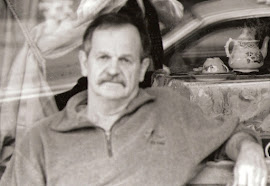W.S. Burroughs & I. Aubert-Baudron
Synchronicities: significant coincidences of a physical phenomenon with a psychic phenomenon, but you cannot explain the link of causality between both. Carl Gustav Jung and William Burroughs conducted researches about it, James Redfield wrote a novel, “The Celestine Prophecy: An Adventure” .
Such synchronicities escape our understanding because we tend to see reality with opposed criteria of “objective”/ ”subjective”, as if what we live inwardly would be “subjective”, i e “imaginary”, in opposition of the “objective facts” we can state, which would be only real. We also tend to believe that we are separate from our surrounding, and that there is no link between what is going on inside us and outside us.
Here the rationalists come and say: “This coincidence is due to random”. But what does “random” means exactly? Once you have said that, where does this leads to ? How random is random? This “explanation” does not explain anything at all, and is blocking further interrogations and research on nature of reality.
Now sometimes, such synchronicities happen, which confront us to a level of reality which does not fit with this rationalist vision : there is a synchronicity between what we live inwardly and the happening of actual events without interference of our will, on which we have no control, but which have a signification just for us. So what’s going on here? We do not know, let’s see. Let’s put the rationalist vision of reality aside for a moment and let’s apply a scientific step, starting by the observation of the facts, including the events of our inner life, what they represent for us, etc., without inferring anything from them at this step and progress starting from there.
We can base our observation on several synchronicities and see where they lead to: they often deal with issues to take in account.
Putting aside the rationalist vision of reality (XVII th century), we nevertheless have a new frame of reference through modern physics (XX th century). We are aware of the notion of dimensions, of multi-dimensional reality, and of levels of reality.
Another domain where such synchronicities appear is in dreams: for instance I began to dream that I was losing my wallet, once, twice, thrice, and was wondering the meaning of it. One Saturday evening in a supermarket, the shop was about to close, I was the last client and in a hurry. I forgot the wallet on the cash register. On Monday morning I went to the shop and got it back. End of the dreams about losing the wallet. So what is going on here? Were those dreams meaningful to me? Yes. Since I pay more attention to my wallet, and I take in account elements of recurrent dreams.
I have got to the conclusion that we can propose the hypothesis of a multi-dimensional reality, with different levels of reality, linked between each other, which may work according different laws . For instance the laws of physics are not valid in dreams. If we try to explain a non–physical level of reality with physical laws, as we tend to do with synchronicities, then it does not fit, and we are confronted to an “impossible situation”. It may be very disturbing! Some people infer from this that they are becoming crazy. But this option also is a dead end and forbids to go further.
Now the interesting aspect here is that we can make our own research. Here general semantics has been very helpful to me when facing such phenomenons: the structural differential allows to consider them through a scientific step, and avoid the traps of some of the past contradictions and dead ends.
My research on synchronicities started with the ones which happened to me related to my meetings with William Burroughs and Brion Gysin: See at the article “The Time of the Naguals” , p. 15 to 31. This was too much ! Incomprehensible when I lived them. I had the impression to live a scenario of “Twighlight Zone” ! General semantics was very helpful here, because the observation of what was happening demonstrated that it was not something “imaginary”, nor “delirious”, but the implications required to draw a new conception of reality: synchronicities confront us to the “unknown” , and this may seem rather scary at first. I had to put up a new map, starting upon what was going on exactly, the links between inner events and the ones happening in physical world, etc., and considering it through a scientific step, through a quantic vision of the world. Then, what was not comprehensible to me before on the old basis became comprehensible in terms of physics. On this basis I could put up new hypothesis, and integrate those synchronicities as part of reality of human life, as something “normal”, compared to when it first appeared to me when I lived them: something incredible and not “normal” at all. It’s a part of the human program we do not use in our civilization, because we do not know about it and have no map to apprehend it correctly; but it’s just like a program on our computer we do not use, but which we can virtually use if the occasion occurs.
Our maps of reality do not represent the actual territory. Though it seems that the exploration of our territory can only be realized by us: only I can know the link between inner events and a physical event, its meaning can only appear to me. This leads to the exploration of our inner space. Again general semantics is a real help, because it allows not progress safely, step by step, without getting lost in mental dead ends. Investigate on the situation as if we were a police inspector investigating on an affair and gathering the elements to understand it, and taking it like a game as well.











